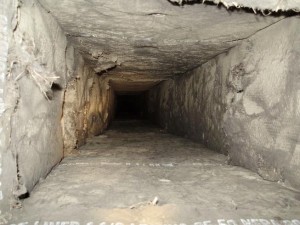 Most commercial air duct systems are internally lined with fiberglass duct liners. Deteriorating fiberglass duct liner is a very common cause for indoor air quality complaints and adverse health effects.
Most commercial air duct systems are internally lined with fiberglass duct liners. Deteriorating fiberglass duct liner is a very common cause for indoor air quality complaints and adverse health effects.
Fiberglass Duct Liner
Fiberglass internal duct liner is commonly used in many commercial heating, ventilation, and air conditioning (HVAC) system. Fiberglass duct liner provides sound attenuation by dampening noise from HVAC equipment, and sound from adjacent office spaces. Fiberglass duct liner provides thermal insulation for air ducts, preventing the air ducts from losing expensive conditioned air.
Fiberglass Duct Liner Deterioration
Over time internal fiberglass duct liner is exposed to varying degrees of air turbulence, temperature and humidity. These environmental changes take its toll on the duct liner, breaking down its primary seal.
The primary seal is a black gritty coating on the surface of the duct liner which locks down the fiberglass fibers. Deteriorated primary coating migrates through the ventilation system depositing within HVAC components and eventually entering the indoor air.
After the primary seal has fully deteriorated, it allows raw fiberglass fibers to be exposed to the airstream. Turbulent airstreams wick the raw fiberglass fibers through the ventilation system, creating additional deposits within HVAC components and exposing building occupants to raw fiberglass fibers.
Health Effects of Fiber Glass Fibers
Health effects from exposure to fiberglass can be different depending on the fiber size and type of exposure. Fiberglass, at a minimum, is an acute physical irritant to the skin, eyes, and upper respiratory tract.
- While no long-term health effects should occur from touching fiberglass. Rashes can appear when the fibers become embedded in the outer layer of the skin.
- Eyes may become red and irritated after exposure to fiberglass as occupants touch horizontal surfaces with deposits of fiberglass fibers, and rub their eyes.
- Soreness in the nose and throat can result when fibers are inhaled. Asthma and bronchitis can be aggravated by exposure to fiberglass.
- Temporary stomach irritation may occur if fibers are swallowed.
How Can Fiberglass Air Ducts Be Repaired?
If caught in the early stages of deterioration the internal fiberglass duct liner can be repaired. Fiberglass duct liner can be resurfaced with an encapsulate specifically designed for HVAC systems. Initially a commercial air duct cleaning needs to be performed to remove the foreign debris from the air duct surface to ensure for a proper bond. After the air duct system is cleaned, the encapsulate is applied to the air duct surface locking down the fiberglass fibers.
If the internal fiberglass lining to too deteriorated, the lining must be removed and replaced. If the damage is localized, new internal internal insulation can be installed within the ducting. If the damage is extensive, consider removing the damaged insulation and wrapping the air ducts with an external fiberglass insulation.

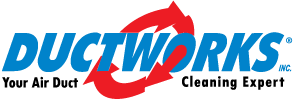
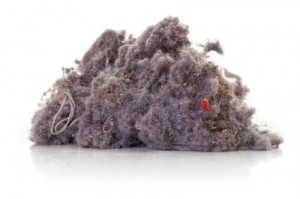 Dust is a combination of pollen, plant and mold spores, pet dander, human skin, lint, bacteria, and other contaminants. While any of these can affect breathing and allergies, dust mites can be a particular problem.
Dust is a combination of pollen, plant and mold spores, pet dander, human skin, lint, bacteria, and other contaminants. While any of these can affect breathing and allergies, dust mites can be a particular problem. Pigeon problems have devastating effects on the heating and cooling components and indoor air quality of a commercial facility. Pigeon problems affect employees, maintenance personnel and potentially customers.
Pigeon problems have devastating effects on the heating and cooling components and indoor air quality of a commercial facility. Pigeon problems affect employees, maintenance personnel and potentially customers.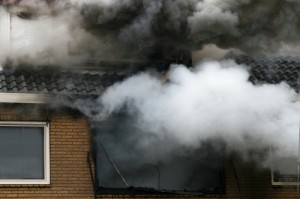 An air duct system is very efficient at spreading smoke. When a fire occurs, the entire HVAC system will be contaminated, to a lesser or greater degree. It is likely that the air duct system will distribute smoke damage well beyond the area of the fire.
An air duct system is very efficient at spreading smoke. When a fire occurs, the entire HVAC system will be contaminated, to a lesser or greater degree. It is likely that the air duct system will distribute smoke damage well beyond the area of the fire.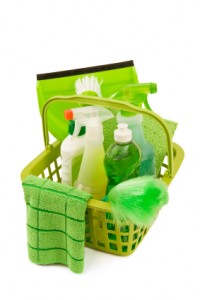 Green air duct cleaners employ advanced methods and materials specifically for green cleaning. They make an extra effort to not allow any dust to escape outdoors or indoors, and only use natural cleaning products.
Green air duct cleaners employ advanced methods and materials specifically for green cleaning. They make an extra effort to not allow any dust to escape outdoors or indoors, and only use natural cleaning products. Local Air Duct Cleaning Company in Denver Post
Local Air Duct Cleaning Company in Denver Post The EPA offers consumers advice about when to get their air ducts clean, how to choose a provider, and qualities to avoid in providers. The EPA does not certify air duct cleaners, so the consumer is responsible for conducting their own research.
The EPA offers consumers advice about when to get their air ducts clean, how to choose a provider, and qualities to avoid in providers. The EPA does not certify air duct cleaners, so the consumer is responsible for conducting their own research.
 The National Air Duct Cleaners Association (NADCA) was formed in 1989 as a non-profit association of companies engaged in the cleaning of HVAC systems. Its mission was to promote source removal as the only acceptable method of cleaning and to establish industry standards for the association.
The National Air Duct Cleaners Association (NADCA) was formed in 1989 as a non-profit association of companies engaged in the cleaning of HVAC systems. Its mission was to promote source removal as the only acceptable method of cleaning and to establish industry standards for the association.